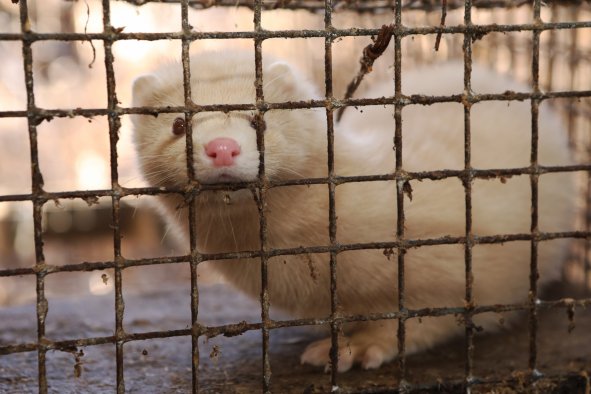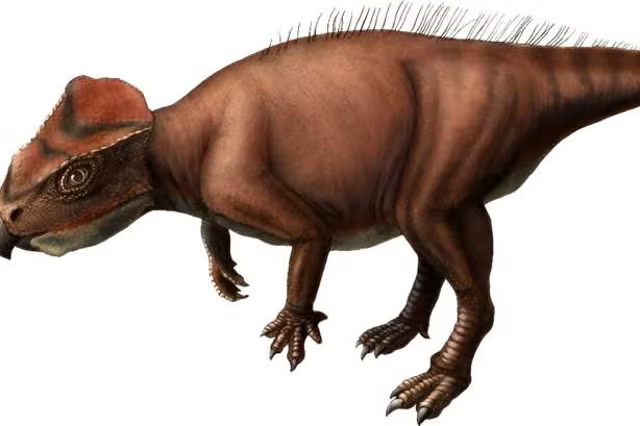A population of invasive freshwater jellyfish, known as the peach blossom jellyfish, is rapidly multiplying in British Columbia lakes.
According to recent research from the University of British Columbia (UBC), these jellyfish clones have now been identified in 34 locations, marking the furthest north they've been found in North America. Climate change is expected to extend their range even further by the end of the decade.
The jellyfish, native to China, are multiplying in the thousands, sparking concerns among scientists.
"We know very little about how they affect ecosystems and biodiversity of these systems in Canada because the research hasn't been done yet. The worry is that they harm indigenous species by outcompeting them," Florian Lüskow, who conducted the study during his postdoctoral fellowship at UBC, said in a statement.
The peach blossom jellyfish were first reported in British Columbia in 1990, primarily in the Lower Mainland, Vancouver Island, and the Sunshine Coast. However, sightings have expanded inland to Osoyoos Lake.
They were first reported in the U.S. in 1908 and, as of 2000, had spread to 43 of the 50 states, according to Animal Diversity Web.
Peach blossoms can call just about anywhere home, from freshwater lakes to reservoirs, gravel pits and even quarries.
Although not harmful to humans, as their stings cannot penetrate human skin, the potential impact of these jellyfish on local ecosystems remains unknown.
"Between 1990 and 2023, a 34-year span, there have been 85 sightings, counted once per location per year, where each sighting could be one or thousands of jellyfish. But in this decade alone, we are predicting about 80 sightings, and likely in more than the 34 locations currently observed," Lüskow said.
But the new study reveals an interesting, and possibly beneficial, genetic quirk: all of the jellyfish examined so far appear to be male clones of one another. These jellyfish are believed to have originated from a single polyp or cluster of polyps, the tiny stage of jellyfish life that resides at the bottom of a water body.
"Polyps are very small, usually around a millimeter in size, and it is challenging to locate them. They inhabit shallow areas and can be found on rocks and submerged wood debris," Evgeny Pakhomov, professor at UBC's Earth, Ocean and Atmospheric Sciences (EOAS) department and the Institute for the Oceans and Fisheries (IOF), said in a statement.
The jellyfish's presence in British Columbia is closely linked to the region's relatively mild winters and warm summers. Pakhomov explained that their spread may accelerate due to climate change, which is warming the region's freshwater systems.
"If climate change leads to freshwater temperature increases across British Columbia, we will likely see wider spread. Modelling indicates that even Alaskan reservoirs may potentially see invasion," he said.
However, there is a limiting factor: as only male jellyfish have been found, the species cannot complete sexual reproduction, and its adaptability to new environments is restricted.
Researchers are now focused on mapping the actual distribution of peach blossom jellyfish in British Columbia and understanding their impact on freshwater ecosystems, especially on young salmon populations.
To expand the search, Lüskow and Pakhomov hope to employ environmental DNA (eDNA), a tool that can detect jellyfish DNA in water samples. This method could reveal hidden populations in their polyp form, which are often difficult to spot.
Additionally, the researchers are urging the public to report sightings through platforms like iNaturalist or the Invasive Species Council of British Columbia.
This would help us answer fundamental questions about the jellyfish and its impact on B.C. ecosystems and species, allowing better informed management recommendations," Lüskow said.
Do you have a tip on a science story that Newsweek should be covering? Do you have a question about jellyfish? Let us know via science@newsweek.com.
References
Lüskow, F., & Pakhomov, E. A. (2024). Spatiotemporal distribution of the non-indigenous peach blossom jellyfish Craspedacusta sowerbii in British Columbia, Canada. Canadian Journal of Zoology, 102(9), 735–745. https://doi.org/10.1139/cjz-2024-0007
Disclaimer: The copyright of this article belongs to the original author. Reposting this article is solely for the purpose of information dissemination and does not constitute any investment advice. If there is any infringement, please contact us immediately. We will make corrections or deletions as necessary. Thank you.



